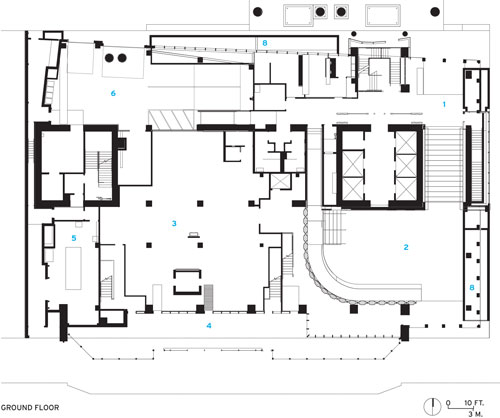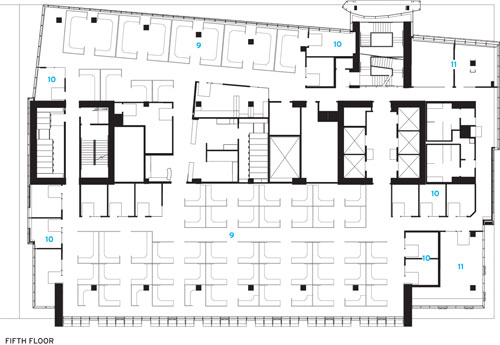Green at Its Core
The turbines and the wastewater-reclamation system are on the leading edge. However, they are not the building's most unusual sustainable elements. Arguably, it is the structural frame, described as "self-healing" by the project's Berkeley-based seismic consultants, Tipping Mar. After a design basis earthquake (DBE) - a major temblor calculated to have a return period of about 475 years - the tower should remain undamaged and safe for employees to occupy immediately. And after a much more powerful and statistically less likely event - a maximumcredible earthquake (MCE) - one with a 2,475-year return period - the building should suffer negligible damage. A MCE is the most severe earthquake that can be expected to occur at a given site on the basis of geologic and seismologic evidence. But following such an event, the PUC building should need repair only to the skin or other architectural elements. The approach goes well beyond the requirements of the code, which emphasize preventing loss of life, rather than minimizing property damage or limiting interruption to operations.
|
||
|











